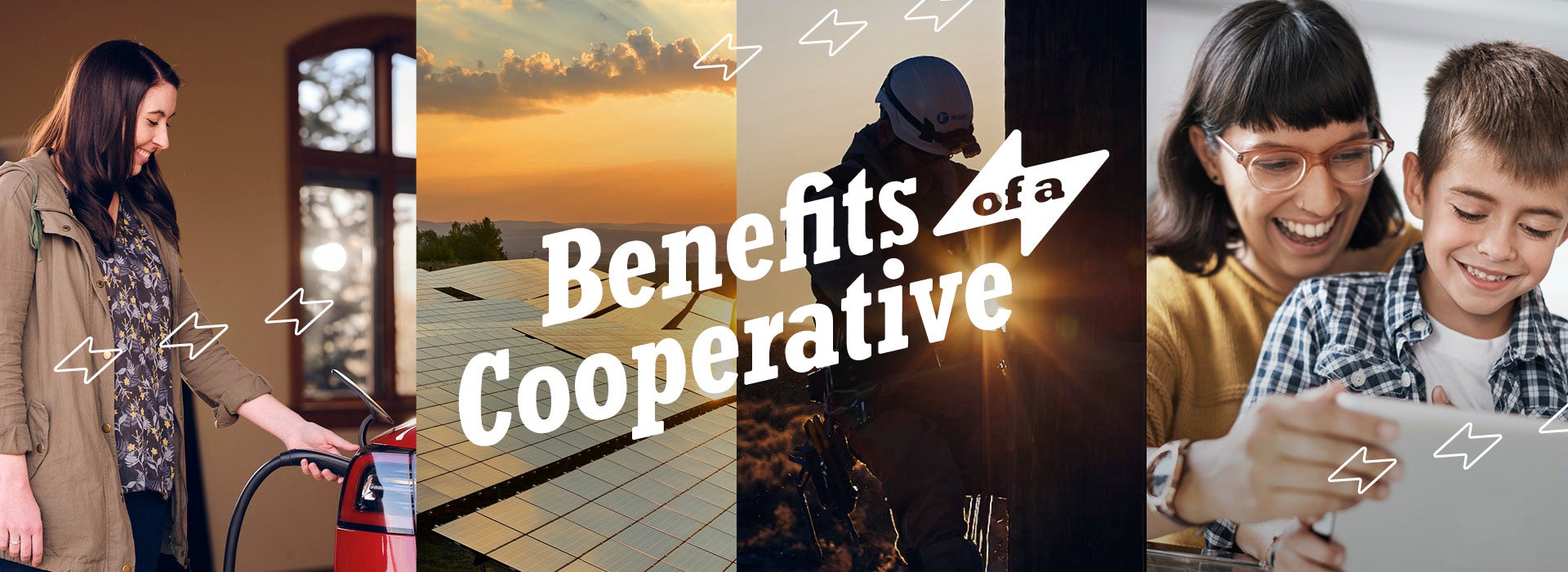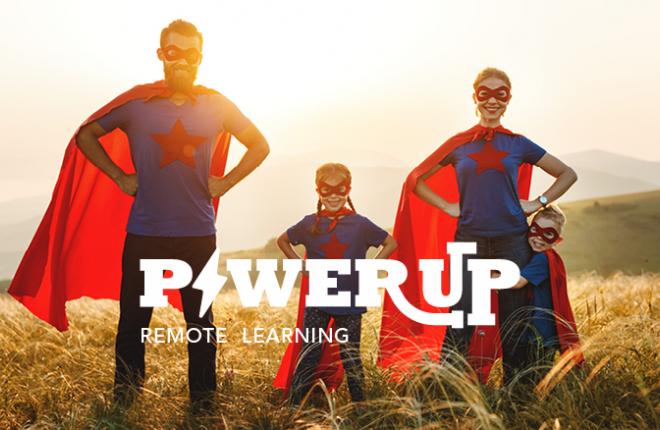
April 16, 2020
What is the Benefit of Being an Electric Co-op Member?
Today’s consumers increasingly want to buy products and services from purpose-driven organizations that contribute to the greater good. That’s one of the benefits some 42 million Americans receive as members of electric cooperatives, which always make the community their top focus.
What is an Electric Co-op?
Electric cooperatives, called co-ops for short, have a unique history and business model that sets them apart from other utility providers. In the United States, they began operating about 75 years ago when residents of rural areas struggled to get access to electric power. There wasn’t enough financial incentive for the existing privately owned power companies to run lines across long distances to areas with comparatively few customers.
So with the help of federal loans, those rural residents joined together to form their own electric providers – cooperatives – to generate, transmit, and deliver electricity to their homes, schools, farms and other businesses – and to do this all on a not-for-profit basis. In the simplest terms, a cooperative is a business that’s owned by members. Those members could be its consumers, its workers or member businesses.
Besides electric co-ops, other well-known cooperatives include credit unions, Ace Hardware (which is owned by its retailers), Sunkist (owned by family farmers), and the outdoor equipment store REI (started by 23 climbing friends). Lately, they’ve been enjoying something of a resurgence, with lots of new cooperative startups in Colorado.
Consumer-Members of an Electric Co-op
The electric co-op model is still going strong today. Tri-State Generation and Transmission Association is one of more than 900 cooperatives providing electricity across more than half of our nation’s landmass. One in eight residents nationwide are consumer-members of these co-ops. Notice they are not called “customers.” It’s an important distinction.
“Our cooperative model keeps our focus on the best interests of our more than 1 million consumer members,” said Tri-State Board Chairman Rick Gordon. “That drives our unrelenting focus on being reliable, affordable and responsible.”
Unlike co-ops, private investor-owned power companies and energy marketers (like other for-profit corporations) operate to generate earnings for and answer to their shareholders and investors, many of whom have no significant ties to the communities served by the companies.
Private corporations play a key role in the U.S. economy and can do a lot of good even as they provide value for their shareholders. But non-profit electric cooperatives exist solely for the purpose of serving their communities. And they answer directly to those community members, who govern the co-ops through democratically elected boards of directors.
By giving consumer-members an influential voice in their electric service, the cooperative model helps keep rates low. Excess revenue is held in reserves as capital credits. Those reserves are either re-invested in the cooperative for infrastructure, facilities, and other necessities, or they are returned to members. Nationally, electric co-ops returned $1.2 billion to their members in 2018. That same year, Tri-State’s members received $30 million in capital credits, and in the past five years, Tri-State has returned $130 million to its members.
Clean Energy and Economic Growth
Electric co-ops like Tri-State are leading the way in the transition to clean energy. That’s not only an environmental benefit; it also brings cost savings and economic growth to co-op communities.
According to the National Rural Electric Cooperative Association (NRECA), electric cooperatives have drastically reduced emissions over the last decade through improvements at power plants and by switching to greater natural gas and renewable energy sources. Since 2010, co-ops are using 145 percent more renewable energy, including solar, hydro, and wind power.
“Today, a third of the energy consumed by our members is from emission-free renewables,” said Tri-State CEO Duane Highley. “Accelerating our renewable energy additions as technology improved and prices dropped results in the lowest possible renewable energy cost today for our members, and likely of any regional utility.” Tri-States’ Responsible Energy Plan seeks to increase the energy consumed within the Tri-State co-op family to 50% renewables in less than three years.
As electric co-ops move toward greater use of clean energy, more of their members are getting into the business of helping to provide that renewable energy, filling clean energy jobs and leasing their land for solar panels and wind turbines. This, in turn, brings new tax revenue to their communities.
The broader economic impact of electric cooperatives is worth noting: According to a recent study, the nation’s electric co-ops contribute more than $88 billion to the nation’s economy and support more than 600,000 jobs annually. These investments back into the community are especially important in these tough times.
75 years ago, electricity was the essential technology needed to transform life and work in rural areas. Today, cooperatives are still bringing these communities the technologies vital for economic growth. More than 100 electric co-ops are providing broadband internet access to their members in rural areas that may have been ignored by other service providers.
NRECA estimates there are still more than 21 million Americans who lack high-speed internet access, leading to billions of dollars in lost economic potential each year -- and making it hard for families to work and attend school from home when needed.
Electric co-ops are also installing electric vehicle charging stations in their communities so members in more sparsely populated areas are not excluded from these advancements in automotive technologies.
Supporting Our Communities Through Energy Cooperatives
Beyond the financial and economic benefits cooperatives bring, there’s a demonstrated commitment to supporting and improving lives in their communities. Cooperatives and their employees are active donors and volunteers, especially in times of crisis.
As the nation currently battles a once-in-a-century viral pandemic, cooperatives are stepping up with contributions to relief efforts. Tri-State has re-allocated funds to donate $200,000 to coronavirus relief efforts in the four states it serves: Colorado, Nebraska, New Mexico, and Wyoming.
Considering the many benefits of electric cooperatives, the results of a recent national co-op survey come as no surprise: An overwhelming majority of the respondents, 93 percent, rated the “overall performance” of their co-op positively. That’s just another sign that the non-profit model of electric co-ops continues to deliver reliable, affordable, and responsible electricity to communities far and wide.
--
About Tri-State
Tri-State is a power supply cooperative, operating on a not-for-profit basis, serving electric distribution cooperatives and public power district member-owners in four states. Together with our members, we deliver reliable, affordable and responsible power to more than a million electricity consumers across nearly 200,000 square miles of the West. Visit www.tristate.coop.
Blog Posts

Smoking a Thanksgiving Turkey in an Electric Smoker Safely

The Future is (Mostly) Now for Smart Homes

5 Fall Family Activities Close to Home

5 Powerful Electric Tools for Fall Clean-up

How to Prepare for Winter’s Worst Storms

10 Ways to Make Online Math and Science Fun

8 Ways to Power Up Your Child’s Remote Learning Routine

How to Create a Productive and Fun Learning Environment at Home


